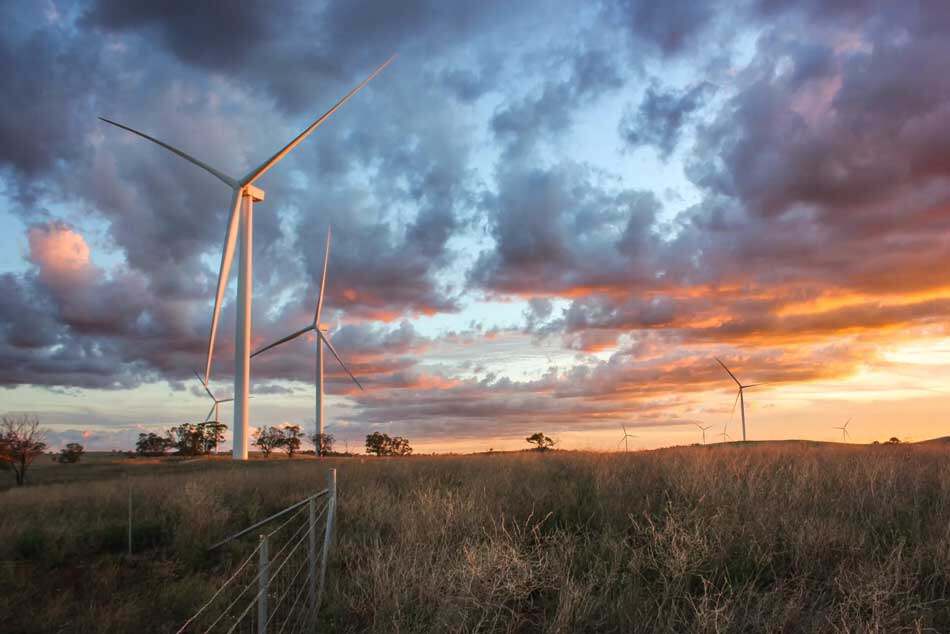Every bit of warming matters if we want to avoid the worst impacts for climate change, as the latest report from the Intergovernmental Panel on Climate Change shows.


In 2020, we released modelling showing how Australia could get to net zero faster – and keep the Paris Agreement goal of holding warming to 1.5°C in play. Our new update shows this is still the case.
This week, we released our latest modelling based on cutting emissions in line with the 2015 Paris Agreement, which set an upper limit on warming of well below 2°C, with a commitment to strive for the lower harm limit of 1.5°C.
At present, the government’s 2030 goal is a 43% reduction from 2005 levels, with plans to set a further target for 2035 soon. Our new modelling of 1.5°C and well-below-2°C (1.8°C) pathways shows we must increase the pace of emissions cuts to between 48-66% for 2030, and 61%-85% for 2035.
This means Australia would reach net zero emissions by 2039, about a decade sooner than the current target of net zero by 2050. Our research shows this is possible.
So how do you actually do this?
In July, the government announced the development of net zero plans for six sectors – electricity and energy, industry, built environment, agriculture and land, transport, and resources. Federal Treasurer Jim Chalmers recently said the government is preparing an ambitious policy agenda with big spending on green industries to help cut emissions, and to grow the economy as reliance on gas and coal falls.
These plans are now under development. Our modelling of these sectors shows which must cut emissions fastest – and how to do it for the least cost.
Electricity
In our 1.5°C and well-below-2°C least-cost scenarios, the electricity sector reaches near zero between 2034 and 2038. Renewable energy is already the least-cost way to generate power. In turn, clean electricity can help decarbonise the rest of the economy.
Industry and resources
In our scenarios, industrial emissions fall by 42% (well-below-2°C) or 54% (1.5°C) by 2035. By 2050, they fall by 54% and 67%, respectively. Earlier and faster electrification and uptake of hydrogen technologies through the 2020s and 2030s drives more emissions reductions in the 1.5°C scenario.
Buildings
Rapid emissions reductions in the building sector come from electrification and improvements in energy performance in both scenarios. Housing energy efficiency improves by 41% by 2050 compared to today’s levels.
Agriculture and land
Cutting emissions in line with the 1.5°C goal will require much more removal of carbon dioxide from the atmosphere, mainly through sequestration in trees or soil. This can happen without damaging agricultural production.
How much CO₂ we need to pull from the air depends on our ambition. For the well-under-2°C scenario, we need to remove 1.4 billion tonnes (1.4 Gt). For 1.5°C, it’s 4.6 Gt. Farming emissions such as methane from livestock and nitrous oxide from fertilisers will take longer to cut, as emissions per, say, kilogram of beef falls while production increases overall.
Adding algae to livestock feed and rolling out slow and controlled-release fertilisers may help lower emissions here.
Transport
Without strong action on transport, emissions will keep growing. Both scenarios show minimal change in total transport sector emissions until 2030. That’s because steady increases in vehicle use as our population and economy grows will prevent overall reductions – even as people go electric.
Under both scenarios, the transport sector changes markedly. Electric vehicles (EVs) become dominant, making up 73% of new car sales under the 1.5°C scenario, or 56% in the well-below-2°C scenario.
Our modelling doesn’t account for the additional potential benefits of shifting trips from cars to public transport, or from road to rail freight.







































